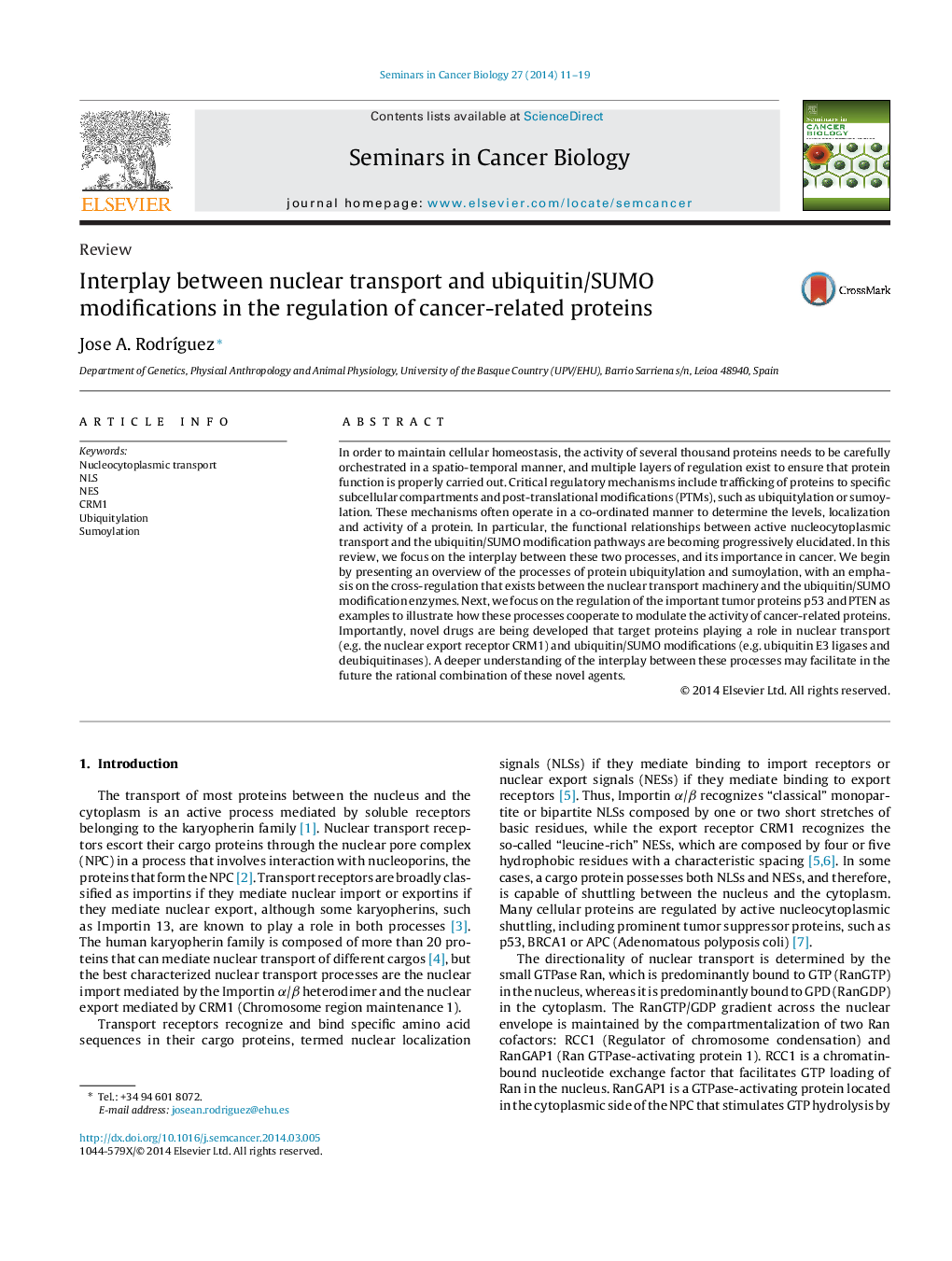| Article ID | Journal | Published Year | Pages | File Type |
|---|---|---|---|---|
| 2023688 | Seminars in Cancer Biology | 2014 | 9 Pages |
In order to maintain cellular homeostasis, the activity of several thousand proteins needs to be carefully orchestrated in a spatio-temporal manner, and multiple layers of regulation exist to ensure that protein function is properly carried out. Critical regulatory mechanisms include trafficking of proteins to specific subcellular compartments and post-translational modifications (PTMs), such as ubiquitylation or sumoylation. These mechanisms often operate in a co-ordinated manner to determine the levels, localization and activity of a protein. In particular, the functional relationships between active nucleocytoplasmic transport and the ubiquitin/SUMO modification pathways are becoming progressively elucidated. In this review, we focus on the interplay between these two processes, and its importance in cancer. We begin by presenting an overview of the processes of protein ubiquitylation and sumoylation, with an emphasis on the cross-regulation that exists between the nuclear transport machinery and the ubiquitin/SUMO modification enzymes. Next, we focus on the regulation of the important tumor proteins p53 and PTEN as examples to illustrate how these processes cooperate to modulate the activity of cancer-related proteins. Importantly, novel drugs are being developed that target proteins playing a role in nuclear transport (e.g. the nuclear export receptor CRM1) and ubiquitin/SUMO modifications (e.g. ubiquitin E3 ligases and deubiquitinases). A deeper understanding of the interplay between these processes may facilitate in the future the rational combination of these novel agents.
